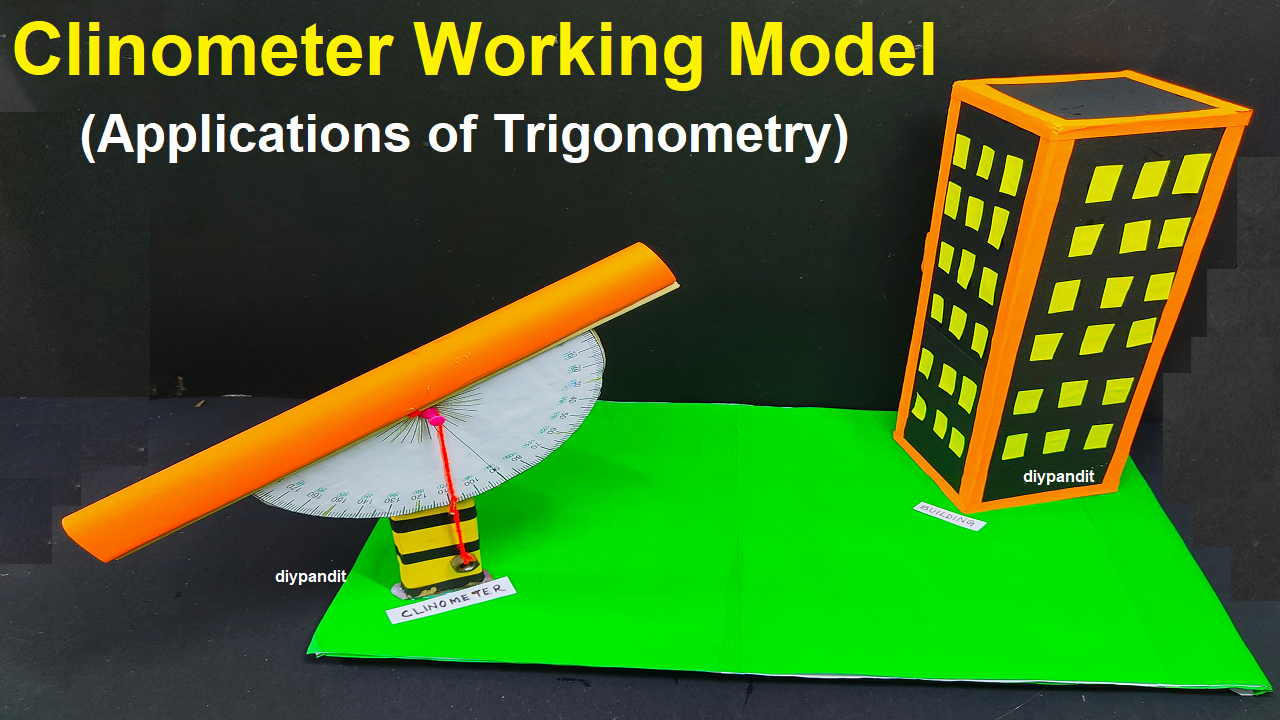Creating a clinometer working model for a math project is a great way to demonstrate the applications of trigonometry in real life.

A clinometer is an instrument used to measure angles of elevation, depression, or inclination.
Here’s a step-by-step guide to building a simple clinometer model:
Materials Needed:
- Protractor
- String or fishing line
- Weight (small object like a washer or a small rock)
- Straw or small tube
- Cardboard or heavy paper
- Scotch tape
- Ruler
- Compass
- Pencil
Steps to Build the Clinometer:
Step 1: Prepare the Base:
- Cut a piece of cardboard or heavy paper into a square or rectangular base for your clinometer.
Step 2: Create the String and Weight Assembly:
- Attach the weight to one end of the string or fishing line. This will be the plumb line.
- Tape the other end of the string to the top corner of the cardboard.
Step 3: Attach the Straw or Tube:
- Cut a small piece of straw or tube and tape it horizontally to the cardboard near the bottom. This will serve as the sighting tube.
Step 4: Add the Protractor:
- Cut out a protractor shape from paper or cardboard. Attach it to the base with the center aligned with the sighting tube. Use the ruler and compass to draw the protractor accurately.
Step 5: Calibration:
- Place the clinometer on a flat surface and align it with a known angle, such as 0 degrees. Make sure the plumb line hangs freely. Adjust the protractor if necessary.
Step 6: Using the Clinometer:
- To measure an angle, look through the sighting tube and align the top edge of the tube with the top of the object whose angle you want to measure. Read the angle from the protractor where the plumb line intersects.
Applications of Trigonometry:
Now that you have your clinometer working model, you can discuss various applications of trigonometry, such as:
- Measuring Heights:
- Calculate the height of tall objects, like trees or buildings, by measuring the angle of elevation from a known distance.
- Navigation:
- Discuss how trigonometry is used in navigation, including determining distances and angles at sea or in the air.
- Engineering and Construction:
- Explain how trigonometry is applied in construction projects to measure angles and distances, ensuring accurate and stable structures.
- Surveying:
- Discuss how surveyors use trigonometry to measure distances and angles in mapping and land surveying.
- Physics:
- Explore how trigonometry is used in physics, such as analyzing projectile motion or calculating forces at different angles.
Ensure to include explanations and examples of trigonometric concepts related to your project. This will enhance the educational value and showcase the practical applications of trigonometry in real-world scenarios.

